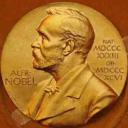Yahoo Answers is shutting down on May 4th, 2021 (Eastern Time) and beginning April 20th, 2021 (Eastern Time) the Yahoo Answers website will be in read-only mode. There will be no changes to other Yahoo properties or services, or your Yahoo account. You can find more information about the Yahoo Answers shutdown and how to download your data on this help page.
Trending News
What is the difference between a new moon and a lunar eclipse?
A new moon is when the earth blocks the suns light from the moon, and a solar eclipse is when the moon blocks the suns light from earth. So shouldn't a lunar eclipse be when the earth blocks the suns light from the moon, the same as a new moon. What am I missing? there seems to be a difference, because every new moon isn't called a lunar eclipse, but I don't understand it.
6 Answers
- 6 years agoFavorite Answer
You're incorrect... The moon orbits the Earth, and when the moon is closest to the sun, the side facing Earth is in complete shadow, and rises & sets about the same time the sun does - this is new moon.
When the moon is *full*, and we see it fully illuminated - it will occasionally slip into Earth's shadow. THIS is a lunar eclipse.
- Roger KLv 76 years ago
"A new moon is when the earth blocks the suns light from the moon..." - No, not at all.
A diagram might help, even if it is rather crude ---
---- New moon:
SUN - - - - - - Moon - - - - - - - Earth
When the moon is in the sky at the same time as the sun, the side away from the earth gets lit by the sun, so there is no part of the moon that can be seen by us.
Most of the time, the moon's path is either above or below that of the sun. Occasionally, a few times a year, the moon happens to pass directly between the sun and the earth, producing a solar eclipse as the shadow of the moon passes across parts of the earth.
--- Full Moon:
SUN - - - - - - Earth - - - - Moon
In this situation, the entire side of the moon that faces earth is lit, there is no sun in the sky, so we can see the whole thing. Most of the time, the moon's path takes it above or below the shadow of the earth. Once in a while, the moon will pass into the shadow of the earth, and that is when we get a lunar eclipse.
A "solar eclipse" is when the sun is <<eclipsed>> by the moon. That can only happen during the new moon phase.
A "lunar eclipse" occurs when the shadow of the earth falls onto the moon. That can only happen during a full moon.
Hope that helps.
- Gary BLv 76 years ago
During a New Moon, the Sun and the Moon are on the same side of the earth at the same time. You can't see the moon because the sun is so bright. The moon IS NOT in the earth shadow during a New Moon -- with the sun and the Moon on the same side of the earth, there can be no shadow!
During a Lunar Eclipse, the sun is on the OPPOSITE side of the earth from the Moon, and during the eclipse the moon is darkened by the earth's shadow.
A Lunar Eclipse can happen ONLY during a Full Moon. A Solar Eclipse can happen ONLY during a New Moon
- Anonymous6 years ago
So sad they don't teach simple science in school anymore.
Lets cover some simple grade 1 stuff here.
1. We see the moon because it reflects sunlight to us.
2. The shadow of an object is on the opposite side of that object from the light source.
Lets put those 2 things together.
A new moon is when the moon is between the Earth and the sun and we can't see it - the part that is in sunlight is facing away from us. Has nothing to do with the Earth blocking sunlight.
A solar eclipse is when the moon's shadow falls on the Earth. This can only occur when the moon is between the Earth and the sun (new moon phase).
A lunar eclipse is when the moon passes into Earth's shadow. This can only happen when the Earth is between the moon and the sun (full moon phase).
The full moon is when the moon is fully lit (from our point of view) by the sun, so it must be behind the Earth.
The moon doesn't always pass through Earth's shadow because the moon doesn't orbit the Earth in the same plane as the sun appears to move.
The moon's shadow doesn't always fall on the Earth because the moon doesn't orbit the Earth in the same plane as the sun appears to move.
- How do you think about the answers? You can sign in to vote the answer.
- Tom SLv 76 years ago
What you are missing is that the Lunar phases have nothing to do with the Earth's shadow. Lunar eclipses when they do occur, can only be during a full moon.
- ?Lv 76 years ago
New - Quarter - Half - Full moon is us seeing the Moon side on in its relationship to the Sun.
Look at a ball in front of you - part of it is in shadow in relation to the sun.
A lunar eclipse is different - thus happens when the Moon passes through the Earths shadow.





